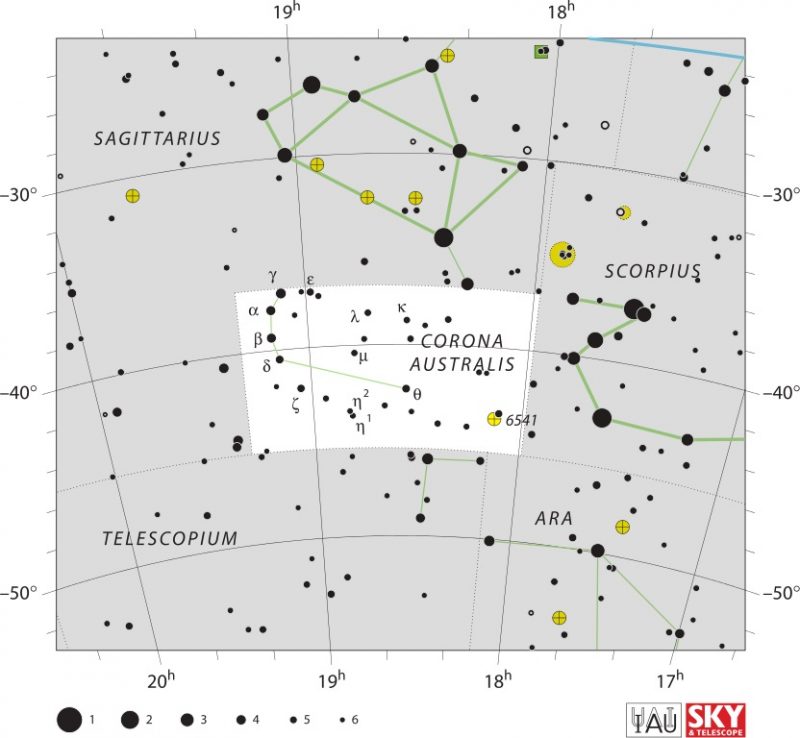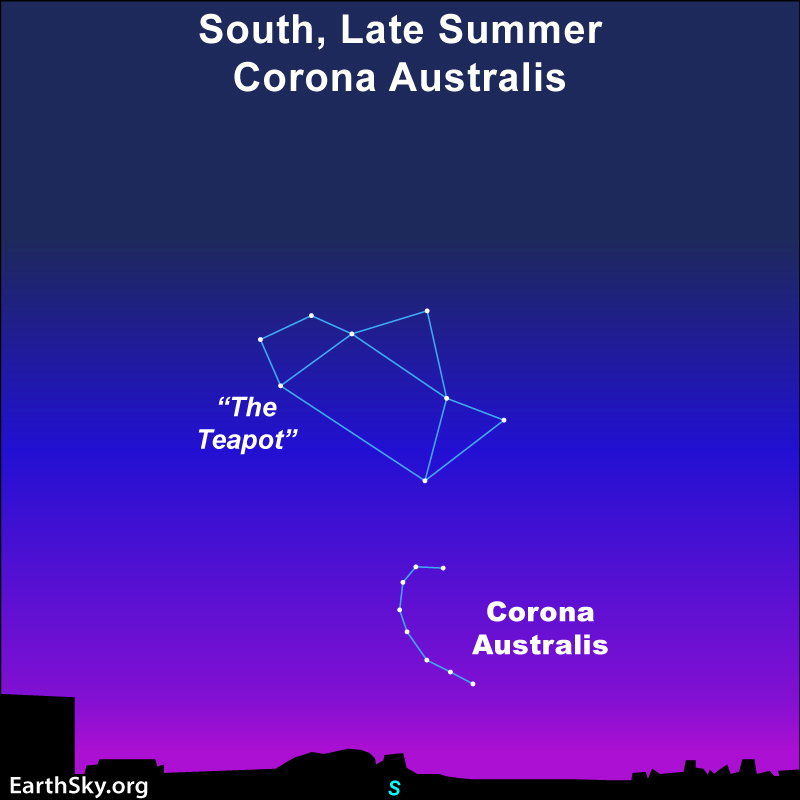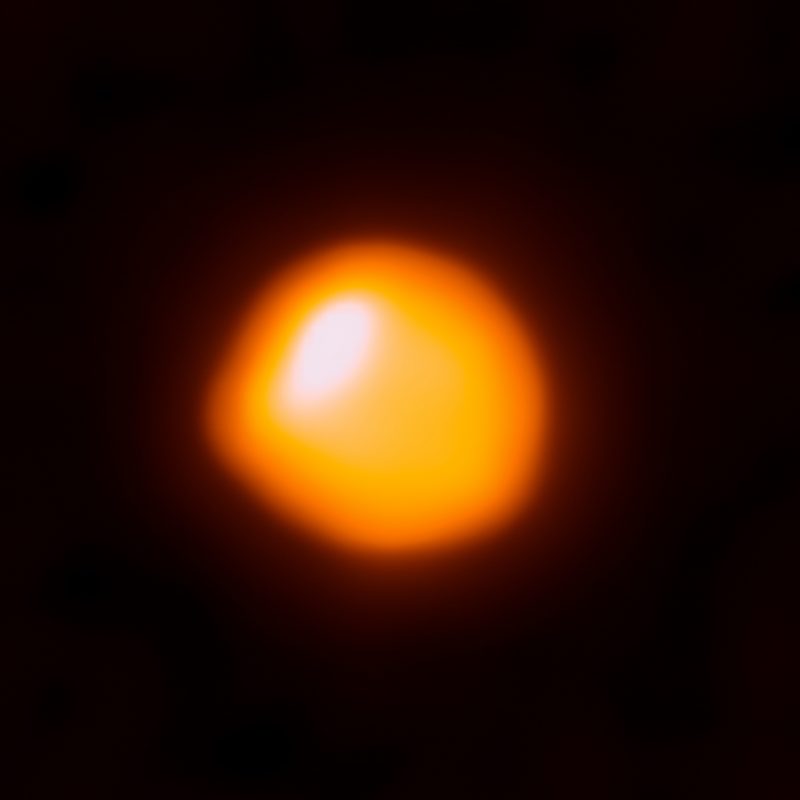Corona Australis the Southern Crown appears as an arc of sparkling stars. In fact, it’s one of the few constellations that somewhat resembles the object it’s named after. Ptolemy named Corona Australis in the 2nd century. Ancient Greeks saw this constellation as a wreath, while other civilizations saw a turtle or ostrich nest. Since it’s quite dim, you’ll want to be under dark skies to find it. But it’s relatively easy to pick out due to its location just south of major constellations. That’s because Corona Australis lies south of the Teapot asterism within Sagittarius.
The stars of Corona Australis
Just like its northern cousin, Corona Borealis, Corona Australis forms an arc. But the stars of the Southern Crown are so dim that its brightest stars are a mere magnitude 4.11. Beta Coronae Australis shines at the eastern edge of the constellation near the middle of the arc shape. The star lies 474 light-years distant.
The next star to the north in the arc is Alpha Coronae Australis, magnitude 4.10 and 125 light-years distant. Continuing in the same direction along the arc is a magnitude 4.23 star, 58 light-years away: Gamma Coronae Australis. Then 1.5 degrees west of this star is Epsilon Coronae Australis, magnitude 4.83 and 98 light-years away. Finally, the last notable star on this side of the arc is just over 3 degrees away, magnitude 5.11, Lambda Coronae Australis, at 202 light-years distant.
Heading the other direction from Beta is Delta Coronae Australis, a magnitude 4.57 star at a distance of 175 light-years. Next out is Zeta Coronae Australis, magnitude 4.74 and 184 light-years away. At the end of the crown is a double star system, Eta 1 and 2 Coronae Australis, at magnitude 5.46 and 347 light-years away, and magnitude 5.60 and 607 light-years distant, respectively.
Check out this lovely deep-sky image of nebulae in Corona Australis by Hector Rafael Vazquez Rispoli in Buenos Aires, Argentina.

Bottom line: Corona Australis is a dim constellation lying below the Teapot asterism of Sagittarius. Its sparkling, curving shape befits its name.





No comments! Be the first commenter?